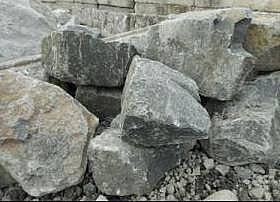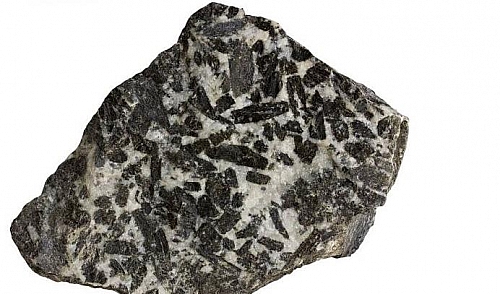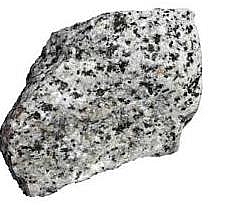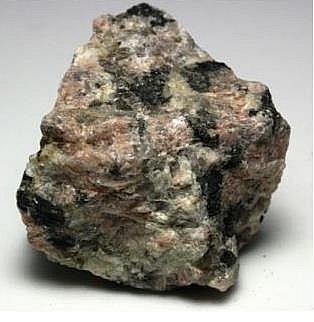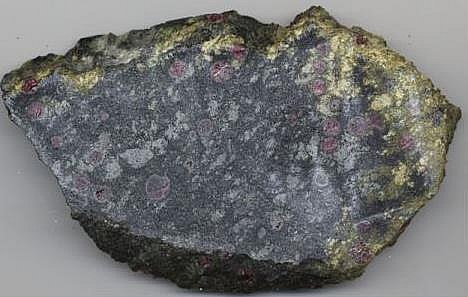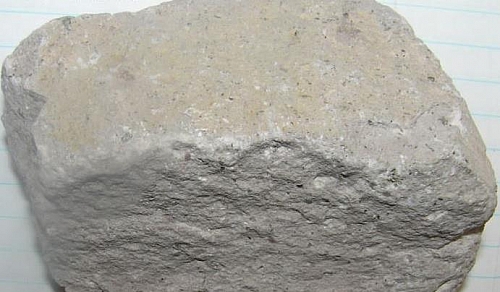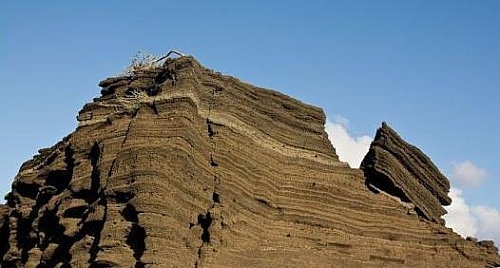Table of Contents
What is Igneous Rock
Igneous rock is one of the three main types of rocks; other ones are sedimentary rocks and metamorphic rocks. Igneous rock is formed from the cooling and solidification of molten magma. Igneous rocks are derived from the Latin word Ignis which means of fire or heat, the name best describes these rocks since they are born of fire. However, the melting of magma could occur due to an increase in temperature, a decrease in pressure, or a change in composition. The magma can be derived from partial melts of existing rocks in either a planet’s mantle or crust.
Magma that is high in silica (Si) generally forms light colored rocks, called silicic. Magma that is low in silica generally forms dark-colored rocks, called mafic. These are generalities; however, there are other factors that affect rock color (For instance, the bubbles that are left behind by escaped gasses. Igneous rocks can be formed under two environmental conditions: namely intrusive and extrusive. In the deep interior of the earth due to cooling, magma may be crystallized to form intrusive rock. If the magma finds its way through the vents to the surface of the earth, then it is termed as lava. This lava after cooling becomes extrusive rock.
Igneous rocks may result to primary and secondary landforms. Primary land forms are a direct result of active or recent igneous activity or notably volcanism. Secondary land forms are a result of differential weathering and erosion of igneous rocks, often long after igneous activity has stopped.
Igneous Rocks Formation
Igneous rocks are rocks formed from the cooling and solidification of molten magma from the earth beneath. A magma consists mostly of liquid rock matter, but may contain crystals of various minerals, and may contain a gas phase that may be dissolved in the liquid or may be present as a separate gas phase.
Magma can cool to form an igneous rock either on the surface of the Earth, in this case, it produces a volcanic or extrusive igneous rock, or beneath the surface of the Earth as a result, it produces a plutonic or intrusive igneous rock. Plutonic rocks cool and crystallize slowly below the Earths surface giving crystals more time to develop and turn into a rock with large mineral grains typically visible to the naked eye (known as coarse-grained) with no glass remaining between crystals (the glass represents the solidified melt in the magma). Similarly, volcanic rocks cool rapidly at the surface, giving magma less time to crystallize completely. Additionally, crystals forming in magma that reached the surface (lava) have less time to develop. The result is a rock with fewer and smaller mineral grains (fine-grained), and large amounts of glass between crystals.
The picture below shows how lava on a volcanic Island (Hawaii) are brought to the surface of the Earth by narrow plumes of hot, buoyant rocks originating in the mantle.
Classification of igneous rocks
One of the ways scientists classify rocks is by determining the origin of the rock (whether it is formed above the surface or below the surface). Another way scientists classify igneous rocks is to determine whether the rock is fine-grained or coarse grained- this method is refers to texture. The third method that scientists use to classify igneous rocks is by determining the chemical composition. However, igneous rocks are classified according to mode of occurrence, texture, mineralogy, chemical composition, and the geometry of the igneous body.
The classification of the many types of different igneous rocks can provide us with important information about the conditions under which they formed.
Types of Igneous rocks
- Extrusive or Volcanic Igneous Rocks
- Intrusive or Plutonic Igneous Rock
Extrusive Igneous Rocks Definition
Extrusive igneous rocks are rocks that have been poured on the earths surface where they are referred to as lavas. These rocks do not contain fossils. An example of extrusive igneous rocks is Basaltic rock and they can be located in the North Eastern part of Nigeria. In the deep interior of the earth due to cooling, magma may be crystallized to form intrusive rock. If the magma moves its way to the surface of the earth through the vents, then it is termed as lava. This lava after cooling becomes extrusive rock.
Intrusive Igneous Rocks Definition
These are rocks which solidified deep in the crust and they are only seen on the earths surface after a prolonged erosive action. Examples are diorite, gabbro and granite. Intrusive rocks are sub-divided into plutonic and hypabyssal. Extrusive rocks are again sub-divided into explosive and quiet type. In intrusive type of rock, the magma solidifies in the deep interior of the earth. Granite, gabbro, syenite, diorite etc. are the examples of intrusive rocks. In hypabyssal type, the magma solidifies in the shallow interior as Porphyry. Magma when thrown by violent explosions into the air after being solidified gives rise to the explosive igneous rocks. Tuff and breccia are some of the examples. In the quite type of igneous rock, the molten magma flows out quietly in all directions and solidifies. Rhyolite, basalt, andesite etc. are best examples of this type of rock.
Examples of Igneous Rocks
- Andesite
- Basalt
- Dacite lava
- Diorite
- Granite
- Gabbro
- Obsidian
- Pegmatite
- Peridotite
- Pumice
- Rhyolite
- Scoria
- Welded Tuff
1. Andesite- Andesite is a gray- black extrusive igneous rock. It is generally erupted from stratovolcanoes as the thick lava flows. It can also generate strong explosive eruptions to form pyroclastic flows. Andesite got its name from the Andes Mountain Range where it is commonly found.
2. Basalt– Basalt is a hard, black extrusive igneous rock, it contains low silica (SiO2) which less than the weight of basalt. As the result of basalt’s low silica content, this rock has a low viscosity (resistance to flow). This allows basaltic lava to flow quickly and allows volcanic gases to flow out without it exploding. Because basalt is the most common type of rock in the Earth’s crust, most of the ocean floor is made of basalt.
3. Dacite lava– Dacite lava is a type of extrusive igneous rock that is usually light gray in color; however, it can be dark gray- black. It is one of the most common rock types that associated with enormous Plinian-style eruptions; the common minerals in Dacite lava include plagioclase feldspar, pyroxene, and amphibole.
4. Diorite– Diorite is a gray, coarse-grained, intrusive igneous rock consisting essentially of plagioclase, feldspar, biotite and hornblende or other mafic minerals. Sometimes this rock may contain small amounts of quartz, microcline, and olivine. Zircon, apatite, titanite, magnetite, ilmenite.
5. Gabbro-This is a coarse-grained dark-colored intrusive igneous rock that contains feldspar, pyroxene, and sometimes olivine.
6. Granite- this is a coarse-grained, light-colored, intrusive igneous rock that contains mainlyquartz, feldspar, and mica minerals.
7. Obsidian- Obsidian is a dense glass extrusive igneous rock; it is usually composed of rhyolite and rich in iron and magnesium. This rock is usually black in color; however, it can appear red or have a greenish tint other times. Obsidian is formed when the lava cools so quickly that crystals do not have time to grow. Obsidian fractures with very sharp edges. It was initially used by Stone Age cultures for making sharp objects like knives, arrowheads, and other tools where sharp edges were needed.
8. Pegmatite– this is a light-colored, extremely coarse-grained intrusive igneous rock. It is formed near the margins of a magma chamber during the final phases of magma chamber crystallization. Pegmatite contains some rare minerals which are not found in other parts of the magma chamber.
9. Peridotite- This is a coarse-grained intrusive igneous rock that is made of almost entirely of olivine. It may contain small quantity of feldspar, amphibole quartz, or pyroxene.
10. Pumice- Pumice is light and porous. It is formed when explosive eruptions occur. There are numerous holes on the surface of this rock which were caused by expanding volcanic gases. Pumice is composed of volcanic glass and minerals, usually forms in rhyolite magmas but they could also come from basalt magmas.
11. Rhyolite- Rhyoliteis a light-colored extrusive igneous rock; it contains high silica material, which makes it very viscous. This prevents gases from escaping causing rhyolite eruptions to be explosive, it eruptions often produce pumice or obsidian. Common mineral types include quartz, feldspar and biotite
12. Scoria– is a dark-colored, vesicular, extrusive igneous rock. The vesicles are a result of trapped gas within the melt at the time of solidification. It often forms as a frothy crust on the top of a lava flow or as material ejected from a volcanic vent and solidifying while airborne. The specimen shown above is about two inches (five centimeters) across.
13. Welded Tuff- welded tuff is a type extrusive igneous rock composed of materials that were ejected from a volcano and lithified into a rock after falling to Earth. It is usually composed mainly ofvolcanic ash and sometimes contains larger size particles such as cinders.
Texture of Igneous Rocks
Igneous rock texture is the measure of size, shape, and arrangement of the mineral grains or crystals within the rock. The texture of igneous rock is determined by many factors, one of the major factors is the rate at which it cools (cooling rate) and other factors are:
- The diffusion rate– atoms or molecules can move (diffuse) through the liquid at this rate.
- The rate of nucleation of new crystals– enough of the chemical constituents of a crystal can come together in one place without dissolving at this rate.
- The rate of growth of crystals– this is the rate at which new constituents can arrive at the surface of the growing crystal. This depends largely on the diffusion rate of the molecules of concern.
However, the outcome of whether extrusive or intrusive cooling is evident in the final texture of the igneous rock. Igneous textures are described by a number of terms.
- Thephaneritic texture: Phaneritic texture describes coarse grains or rocks that contain mostly large crystals that are visible to the eye.
- Aphanitic texture: A rock with anaphanitic texture has a fine grain; it contains mostly a small amount of crystals which are too small to be seen.
- Porphorytic texture: An igneous rock that contains both large and small crystals has aporphorytic texture.
- Pyroclastic: This texture occurs when explosive eruptions blast the lava into the air resulting in fragmental, typically glassy material which fall as volcanic ash, lapilli and volcanic bombs.
- Glassy texture: Glassy or vitreous texture occur during some volcanic eruptions when the lava is quenched so rapidly that crystallization cannot occur. The result is a natural amorphous glass with few or no crystals. Examples include obsidian and pumice.
- Pegmatitic: This texture occurs during magma cooling; when some minerals grow and become so large that they become massive, (the size ranges from a few centimeters to several meters). This is typical of pegmatite.
Other igneous textures that are typical of surface formation are associated with volcanic activity. These textures are pyroclastic, vesicular, or glassy textures. Pyroclastic textures result from the compaction of volcanic ash and explosive debris. As a result, this texture typically has a gritty feel, and the rock contains tiny bits of fragmented material.
A vesicular texture is caused when dissolved gases and other volatile components of magma erupt from the liquid portion due to a decrease in pressure. This causes the magma to foam up, and the resulting rock to be riddled with hole-like structures called vesicles. Finally, when magma cools so quickly that the molecular components have no time to form even the smallest crystals a glassy texture will result.
Igneous Rocks characteristics
- Igneous rocks are formed by the cooling and solidification of molten magma.
- These rocks are crystalline in nature hence they are called crystalline rocks
- They are non-stratified rocks (that is they do not occur in layers.
- They may have fine-grained or glassy texture (e.g. extrusive igneous rock).
- Igneous rocks may have a light or dark colour
- The major forming mineral is silica
- They are resistant to erosion and are usually hard and impervious
- They are usually made of two or more minerals
- There are basically two types of igneous rocks namely extrusive and intrusive igneous rocks.
- They do not contain fossil
- They are formed inside and as well as on the earth surface
Where are Igneous Rocks Found?
Igneous rocks are found just anywhere especially where t mountain buildings and volcanic activities have taken place, these rocks make upmost of the rockson Earth Surface. Some places are made of little igneous rocks while other places have much of these. You can find igneous in all the continents of the world
Some common places you can find igneous rocks on Earth are
- In northern Canada, much of the hard rock found there are igneous rocks.
- Parts of the Shetland lsles.
- In Canary Islands.
- Southern coast of Gran Canary.
- In India, they are commonly found in Peninsular India comprising Andhra Pradesh, Telangana, Tamil Nadu, Karnataka, Kerala and Maharashtra.
They can be found in the far North and North Eastern part of Nigeria for instance places like Plateau state, Adamawa, Taraba, Nasarawa are where you can igneous rocks in abundance, there are lots of them in Abuja, the federal capital of Nigeria.
- Igneous rocks are also found in south Odisha (e.g., Eastern Ghat) in some places in Jharkhand,
- Igneous rocks are found in the Himalayas for example e.g., Dholadhar with granite




